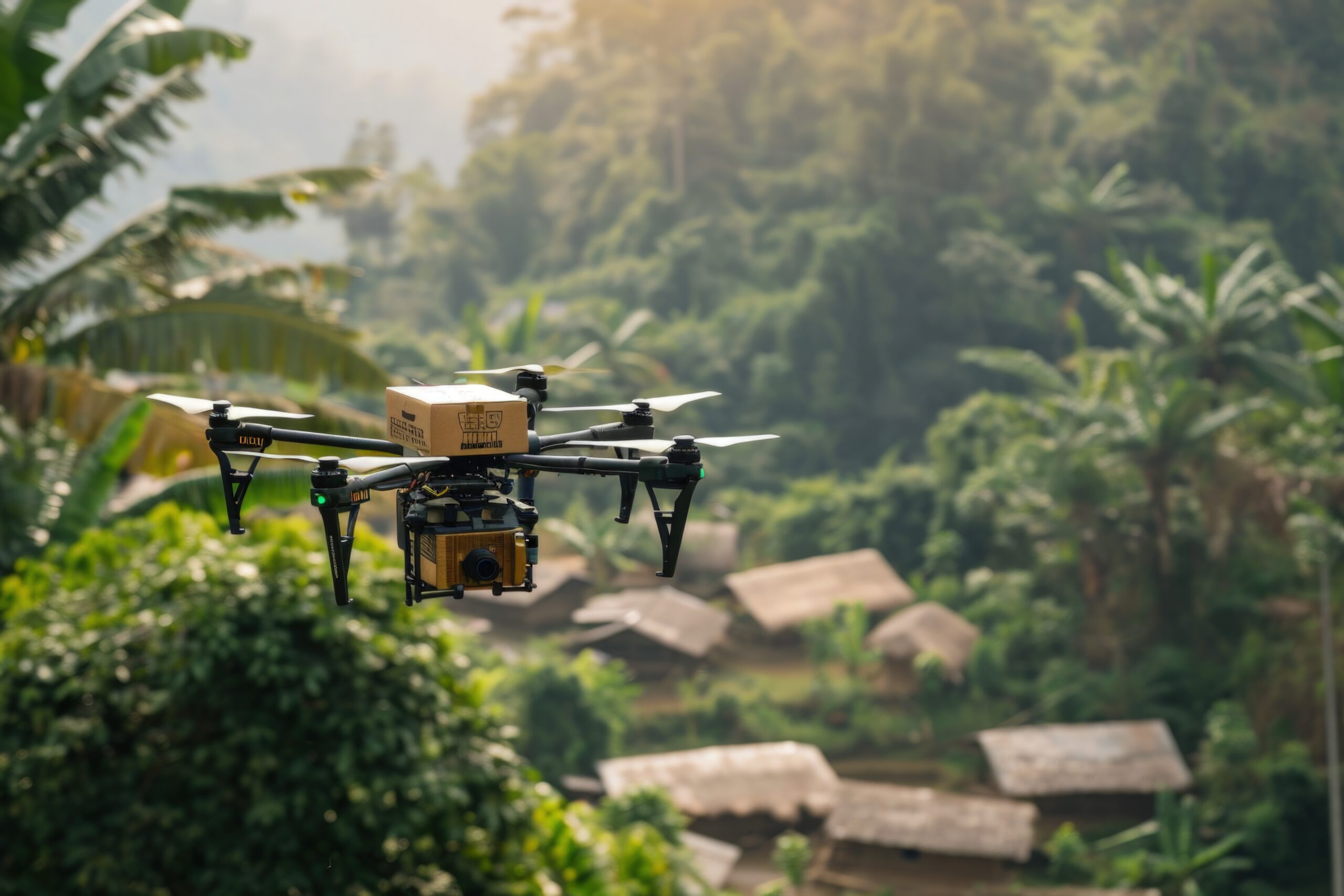Early pest detection can mean the difference between a thriving harvest and a devastating loss. Farmers have long relied on manual scouting, but pests multiply quickly, often spreading before the signs become obvious. That’s where agriculture drones provide a modern solution, offering real-time monitoring that reveals pest threats before they cause irreversible crop damage
Agriculture drones are giving farmers a sharper set of eyes in the sky. By identifying issues early, these tools help prevent widespread damage while reducing the need for unnecessary chemical use. The question is: how do they make this possible?
How Do Agriculture Drones Identify Pest Infestations?
Agriculture drones use advanced cameras, often equipped with multispectral and thermal imaging, to detect subtle changes in crop health. Stressed plants show patterns invisible to the naked eye, such as shifts in light absorption. By spotting these signals, drones highlight areas where pests may be feeding or spreading.
Paired with data analysis, drones don’t just reveal a patch of discolored plants; they reveal a story of what’s happening beneath the surface. Through solutions offered by companies such as Talos Drones, farmers gain high-resolution imagery and data-driven insights that transform early detection into timely, effective action against pest threats.
What Makes Drone Detection More Reliable Than Manual Scouting?
Manual scouting requires walking acres of farmland, which is time-consuming and prone to human error. A small infestation can remain hidden until it rapidly spreads across the field, damaging a significant portion of the crop before detection. Drones, however, scan vast areas within minutes, providing consistent and objective data.
By capturing high-resolution images across different light spectrums, drones can uncover problems long before visible damage appears. Farmers no longer rely solely on guesswork or scattered field samples, allowing them to act confidently and prevent infestations from gaining momentum.
Why Is Early Detection So Important For Farmers?
Pests reproduce at rapid rates, sometimes doubling populations in a matter of days. Once widespread, they demand more chemical treatments, driving up costs and environmental impact. Early detection allows for targeted responses that limit both crop loss and pesticide use.
Farmers who identify infestations quickly preserve yield potential and protect future planting cycles. Early action also reduces stress on beneficial insects and soil health, supporting long-term sustainability. Timely pest detection ensures interventions are smaller, cheaper, and less disruptive to the overall crop ecosystem.
How Can Drone Data Be Used Effectively By Farmers?
Drone data provides more than just imagery. It transforms into maps and trend reports that guide precise decision-making. By layering drone insights with ground-level observations, farmers can pinpoint hotspots, adjust spraying zones, and evaluate the effectiveness of their interventions.
Instead of blanketing entire fields with treatments, farmers direct resources only where needed. This targeted approach lowers input costs and keeps fields healthier throughout the season. The shift is from reactive measures to proactive, informed pest management that consistently saves both time and money.
What Are The Steps Involved In Drone-Based Pest Monitoring?
Drone-based monitoring doesn’t happen all at once; it’s a process that combines technology with practical farming decisions. It involves scanning fields with drones, analyzing imagery through advanced software, and responding with targeted pest management practices. Each step builds on the previous one to create a complete system of protection. Here’s how it unfolds:
Initial Field Scanning
The drone flies over the farmland, capturing multispectral and visual data. This step ensures the entire field is covered, not just small sections, creating a reliable baseline for ongoing comparisons.
Data Interpretation And Analysis
The captured images are processed with specialized software that highlights stress patterns, pest clusters, or unusual growth. Farmers can see where trouble is developing and decide what areas need closer inspection on the ground.
Targeted Intervention Planning
Once hotspots are identified, farmers can plan selective treatments or physical controls. This keeps interventions efficient and limits unnecessary chemical use, making pest management more sustainable and cost-effective.
When Is The Best Time To Use Agriculture Drones For Monitoring?
The best time depends on crop growth stages and pest behavior. Early-season flights provide a baseline for plant health, while mid-season monitoring helps track potential outbreaks. Regular scans, especially during pest-prone months, create a safety net against sudden infestations.
Even late-season monitoring holds value, allowing farmers to measure intervention success and prepare for the next planting cycle. Think of drones as an always-available scout, one that never tires and adapts to the changing needs of the farm.
Where Do Farmers See The Greatest Impact Of Drone Technology?
The most noticeable impact is in large-scale fields where manual scouting is least effective. Crops like corn, wheat, and soybeans benefit greatly from aerial monitoring because pests often spread unevenly. With drones, farmers can quickly spot localized infestations before they spread.
Even smaller farms gain value, as drones reveal trends across different soil conditions and microclimates. Beyond pest control, the technology often uncovers irrigation issues, nutrient deficiencies, and disease pressures, providing a fuller picture of field health.
Frequently Asked Questions
How accurate are drones at detecting pests?
Drones don’t identify individual insects directly but detect plant stress caused by them. Accuracy improves when paired with ground truthing, ensuring that aerial insights match on-the-ground observations.
Do drones replace traditional pest management methods?
No, drones complement existing methods. They enhance scouting efficiency and precision, but physical inspections and integrated pest management strategies remain essential for full protection.
Are drones affordable for small farms?
Costs vary, but options like cooperative drone services or rental programs make the technology accessible. Many farmers find that the savings in reduced crop loss and pesticide use outweigh the investment.
What’s a common misconception about drone use in farming?
Many assume drones are complicated to operate and require advanced training. In reality, modern models are user-friendly, and software simplifies data interpretation. The learning curve is shorter than most expect.
